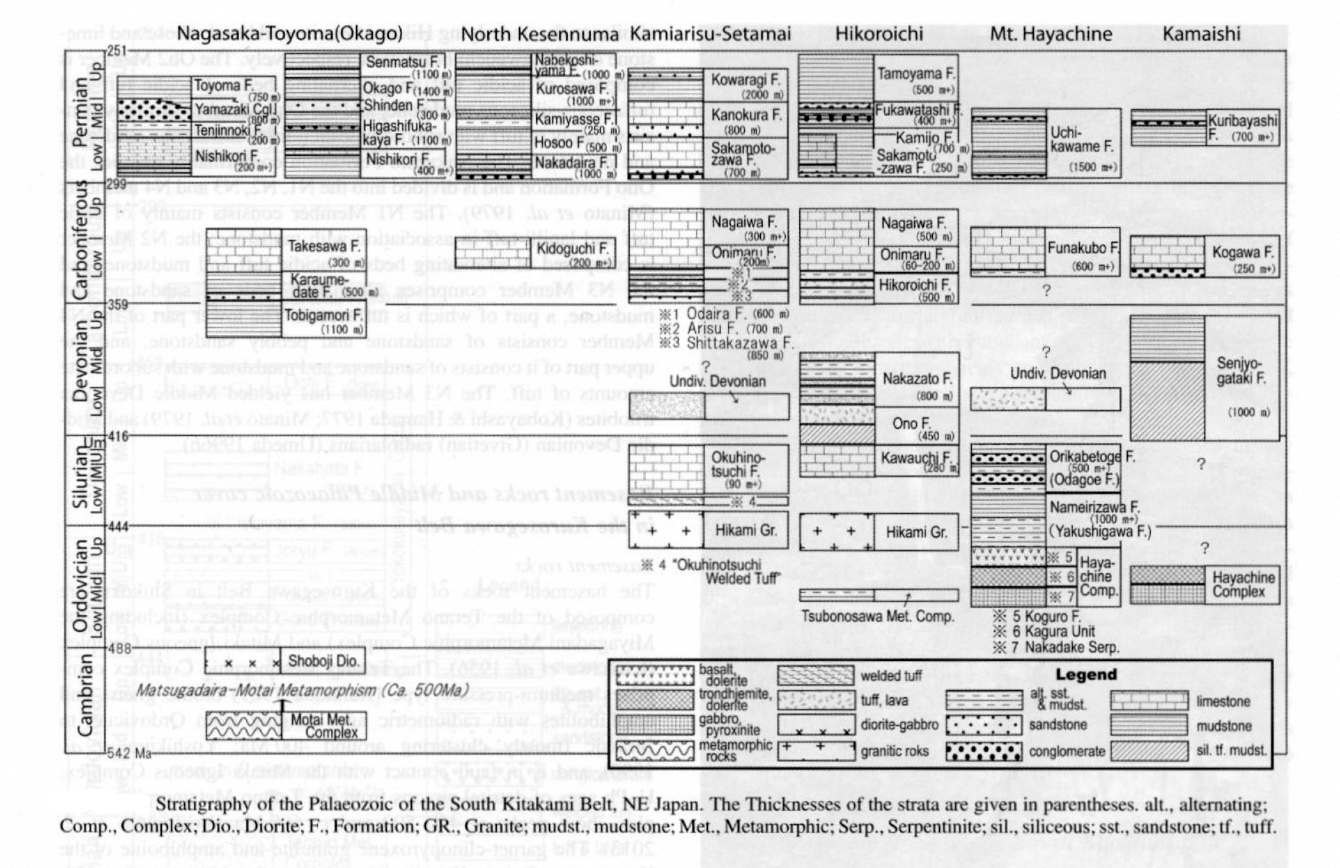Matsugadaira Motai Metamorphic Complex Fm
Type Locality and Naming
Nagasaka-Soma district
Synonym:
Lithology and Thickness
These metamorphic outcrops comprise amphibolites (basalt and gabbro origin), greenschist, pelitic schist and serpentinized ultrabasic rocks, with subordinate amounts of siliceous and psammitic schists.
[Figure 1: Stratigraphy of the Palaeozoic of the South Kitakatmi Belt, NE Japan (after M. Ehiro et al., 2016)]
Relationships and Distribution
Lower contact
Regionally, the schematic strat column indicates this is the oldest unit.
Upper contact
The Matsugadaira Unit is unconformably overlain by the Upper Devonian Ainosawa Fm (Ehiro & Okami 1990). Sasaki et a1., (1997) reported an unconformity outcrop between Motai ultrabasic rocks and covering middle Palaeozoic sediments of the Tobigamori Fm (see
figure) at Natsuyama. Regionally, the schematic strat column indicates the next younger unit as Shoboji Diorite Fm
Regional extent
Nagasaka-Soma district
GeoJSON
Fossils
Age
Depositional setting
Additional Information
